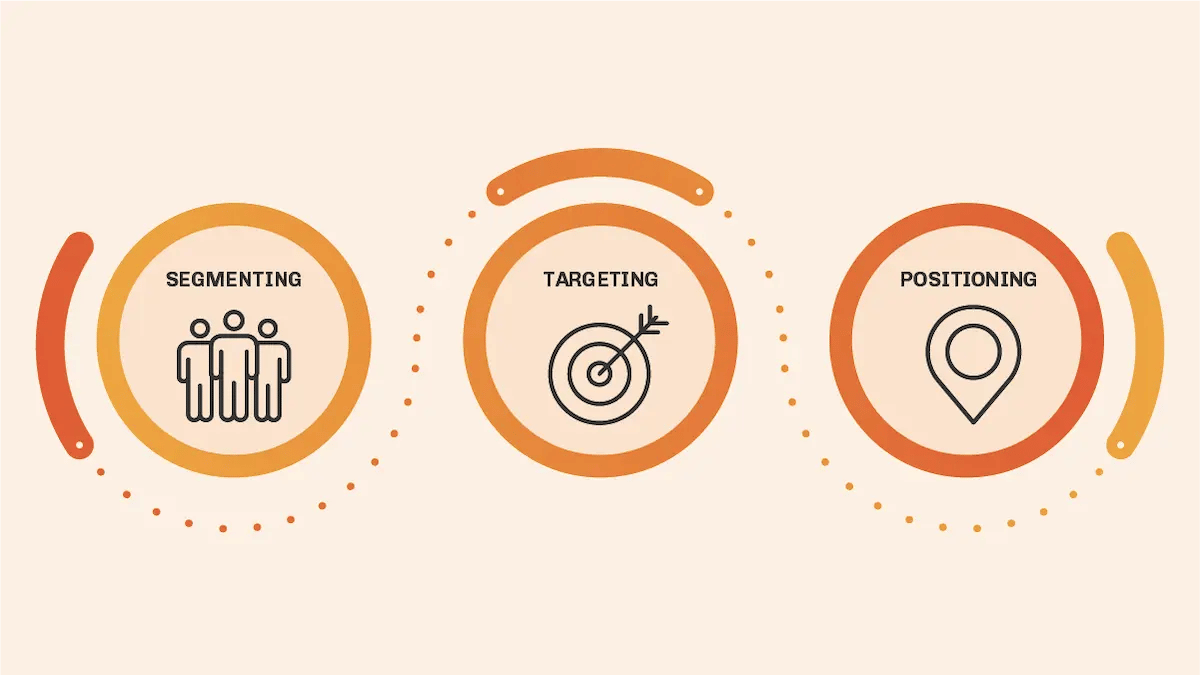The STP (Segmentation, Targeting, and Positioning) strategy has emerged as one of the most trusted, strategic approaches to modern marketing in recent years. It is one of the most commonly applied marketing models used right now and is hailed for its highly-efficient design.
At the heart of the STP model is the goal of helping marketers develop personalized messages to engage with different audiences through a three-step model. This strategy has helped countless marketers streamline their efforts, and it could be the solution your company has been looking for.
Ready to see how STP can augment your current marketing initiatives?
| STP Marketing Model |
What is the STP Marketing Model?
The STP Marketing Model is comprised of a three-step funnel system.
- Segmentation
- Targeting
- Positioning
When used together, these three sectors can help create a clear path toward better communication with different types of audiences. Unlike other approaches to marketing communication, this approach is audience-focused instead of product-focused.
Here’s what to know about each of these funnels.

What is Marketing Segmentation?
This research-based funnel aims to identify a basis for the segmentation of your target customers. When you start creating a new strategy, chances are you already have an idea of who your audience is, and while you can target your entire audience through a broad message—that generic message may not appeal to everyone.
This is where segmentation comes in.
This allows you to separate the audience into smaller groups based on specific attributes so you have more clarity on how different members of your audience use or respond to your product, so you can create messages more focused on their unique needs.
While every brand is different, here are some of the most common criteria brands use:
Where
What
How
Who
Being able to segment your audience like this, means doing the research necessary to get to know your audience. Once you have all the details and everyone sorted into different segments, its’ time to move to the next phase.
What is Marketing Targeting?
In this next phase, known as targeting, the goal is to evaluate the potential of each segment that you just created. This includes looking at the commercial attractiveness of each of these segments, or which segmented group you created is worth pursuing.

Here are some of the most common criteria used to determine the value of each segment.
Size
Uniqueness
Accessibility
Profitability
Benefits
Using this filter on each segmented group is one of the easiest ways to narrow down all of your segmented groups to determine which ones are worth actually marketing towards. With these specific segments highlighted, it’s time to move on to product positioning.
What is Product Positioning?
Product Positioning, or simply Positioning, is the final step in the STP model. Here is where you use all of the information you have from segmentation and targeting to determine how you’re going to communicate your product to your audience segments.

This is the step where you finally bring your actual product to your audience. Here are a few steps you’ll need to make to bridge that final gap between you and your audience.
- Perform competitor analysis to see what other brands are (and aren’t) doing in this space.
- Figure out your value or what you offer that other brands don’t. This will help you see where the gaps are in the industry, so you can set yourself apart with your message.
- Determine how your customers in each segment prefer to be communicated with. You want to make sure that your messages are reaching people where you are.
- Think about what your appeal is, for example, if you are in a luxury space, things like exclusivity or clout are going to be more important to your customers than monetary savings.
No one knows your brand and your product better than you. Make sure you take the time to really determine how your product is positioned in the market so you have a clear idea of where you stack up in your niche and how you should market your company to maximize profits and stand out from the competition.
What Potential Pitfalls Can Impact STP Marketing?
The STP Marketing strategy has been a staple not only in the Ecommerce industry but in countless other markets for years. However, even though this strategy is proven to work, there are a few things to keep in mind when using these strategies.
- In addition to making sure your market is large enough—be certain you can easily contact these individuals with your current communication channels.
- Don’t avoid market research, you may think that you know your audience fairly well, but market research is so important with this approach.
- Make sure that you are always trying to add value to your customer’s existing customers while separating yourself from other competitors.
Avoiding these potential pitfalls will ensure that you are applying this strategy appropriately and that you can get the best results possible from your foray into the world of STP Marketing.
 You've made it this far and you've learned so much. Congratulations!
You've made it this far and you've learned so much. Congratulations!
If you're looking to learn more about marketing or Ecommerce in general, feel free to reach out to us at: solutions@undigital.com
You May Also Like
These Related Stories

Using the Marketing Ansoff Matrix in Ecommerce

McKinsey 7-S Framework for Evaluating Organizations and Teams


